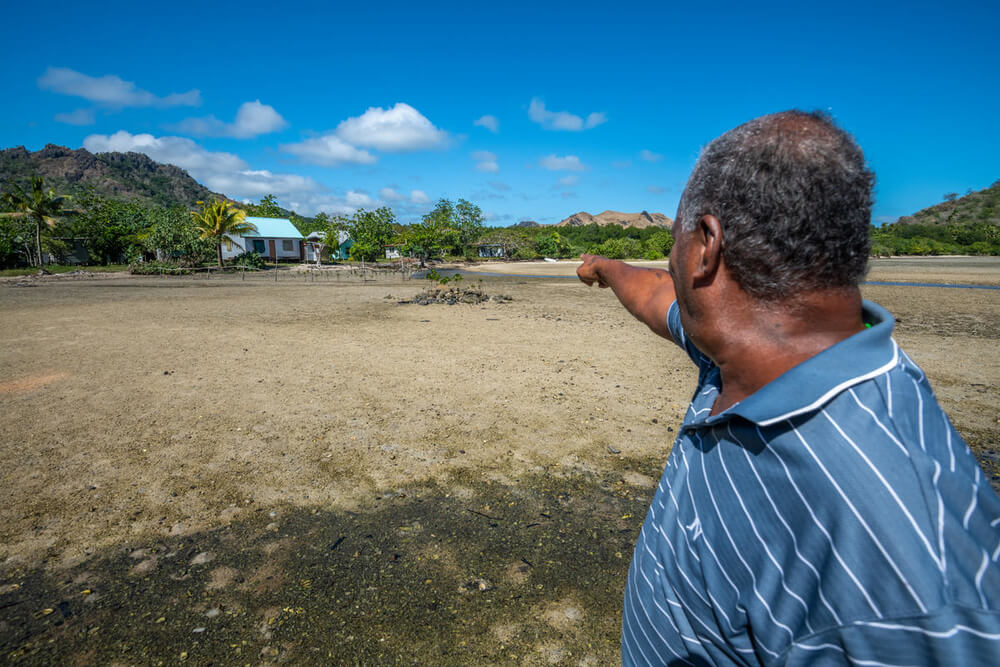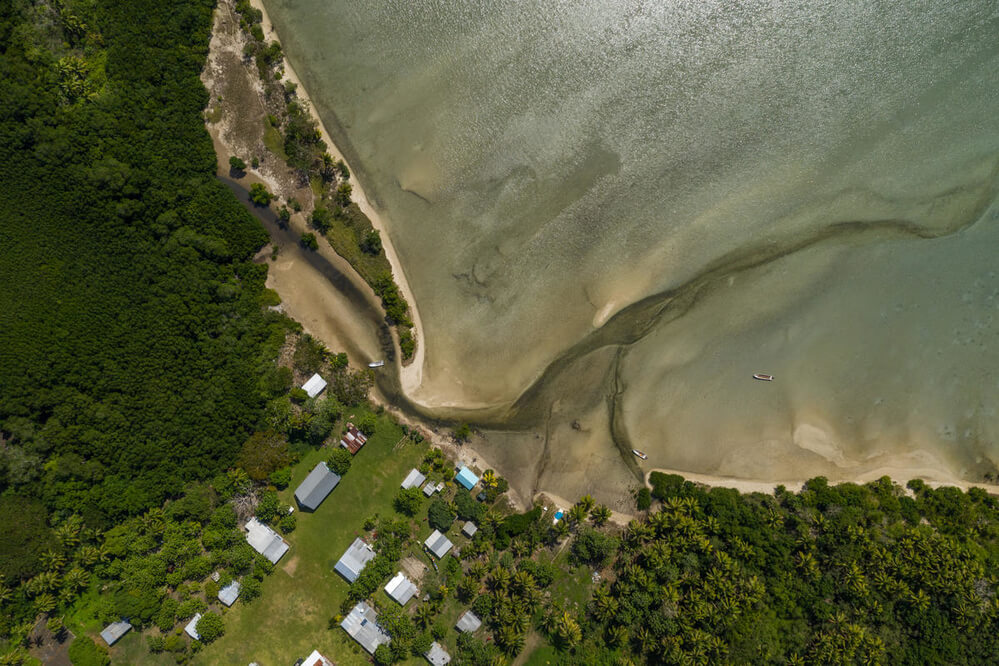© Tom Vierus / WWF-UK
Features
Raviravi and Korovatu, Fiji
- Climate Change
- Communities
- Outside the Arctic
No holding back the tide in Fiji
Arctic melt is swamping shores a world away. Josateki Manatua remembers when things started to change for his small village of Raviravi, in the north of Fiji.
At first, he noticed changes in the shoreline, but then, the water started to creep closer and closer to buildings, engulf trees, and flood farmland. It even overtook the local cemetery.

© Tom Vierus / WWF-UK
About 30 years ago we noticed the changes in our shoreline. The burial ground for the Tongans is now underwater. Also, what’s left of the big trees that used to grow on our shoreline. We had a village co-operative store near the burial ground, but now it’s gone due to sea level rise.
Josateki Manatua
The island of Vanua Levu is just one of Fiji’s 300 islands currently threatened by climate change and rising sea levels
For the past 25 years, Fiji has recorded a 6mm increase in its sea level each year – much more than the global average, and yet the country has some of the smallest carbon emissions in the world.
People in Raviravi depend on fishing and farming for food and income, but climate change is taking its toll on this community. Villagers have witnessed the shoreline move 30m inland, forcing them to relocate.
“The shoreline had reached some of the houses and the only option for us was to move inland.” Josateki said the government is aware of their situation, “but we don’t have the funds to reconstruct houses and to be relocated.”

Raviravi isn’t the only village on Vanua Levu threatened by rising sea levels
The people of nearby Korovatu have traditionally farmed sugar cane and rice, but the seawall built to protect their farmland can no longer stop seawater from intruding.
Binesh Chand has farmed sugarcane around Korovatu for 30 years, and before that, his father farmed the land.

© Tom Vierus / WWF-UK
I used to work the land with my father when I was a child. We had good harvests back then. We’d supply around 600 to 700 tonnes of sugarcane. We have 25 acres of land. It used to be better but for the past ten years, our land has been facing the adverse effects of climate change because we face saltwater floods.
Both communities have tried to hold back the sea with walls, but with limited or no success. In Raviravi , the sea wall that was built with coconut logs was destroyed by strong waves and storm surges.
The seawall built in Korovatu to protect their farmland is not enough to stop seawater intruding. Over the last few years, increasing amounts of saltwater has caused crops to fail and some of the land is no longer suitable for farming, with devastating consequences for villagers.
I’ve been living here because when my father bought this land, we never faced these difficulties. There were no floods or saltwater leakages. That’s why…Now, for the past 10 or 20 years I’m settled here. Where can we go now? We have no land.
Binesh Chand
Working with nature to stem the tide
Raviravi has decided that rather than rebuilding the wall, they will try and work with nature instead.
The 150 strong community has planted mangroves in the hope of slowing down the sea’s progress. But they’re deeply worried about their future because they know the mangroves cannot stop sea levels from continuing to rise, the only way to do that is to cut global carbon emissions.
For that solution to work, Binesh and Josateki need help from all of us.
How WWF is helping
Building resilience
WWF works in Fiji to help build resilience in coastal communities, reduce their vulnerability to loss of land as the sea encroaches and increase their food security.
Protecting coasts
We’re ensuring communities understand the importance of mangroves – which provide coastal protection in low-lying areas and prevent flooding to help local people to protect and restore valuable ecosystems they depend upon.
Scaling sustainability
We also work on sustainable development, from a community to a national scale to ensure the important services nature provides are integral in development planning.
By WWF Global Arctic Programme